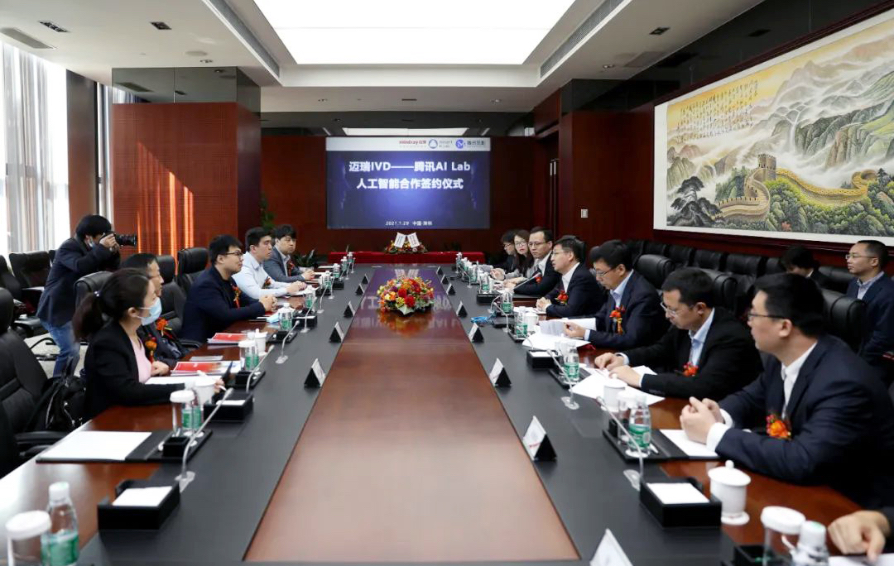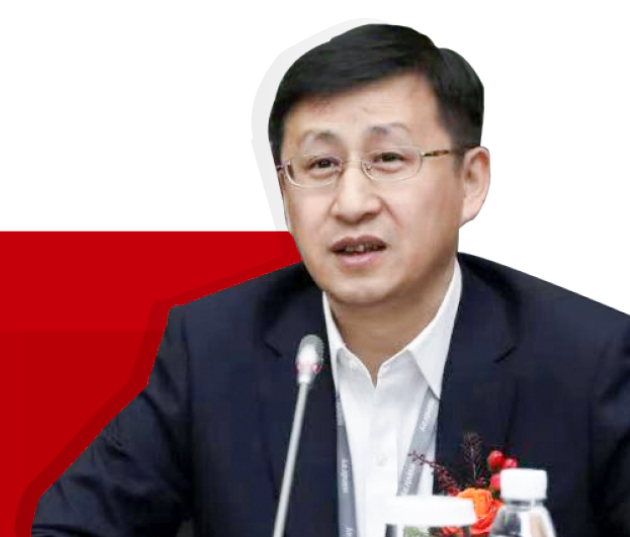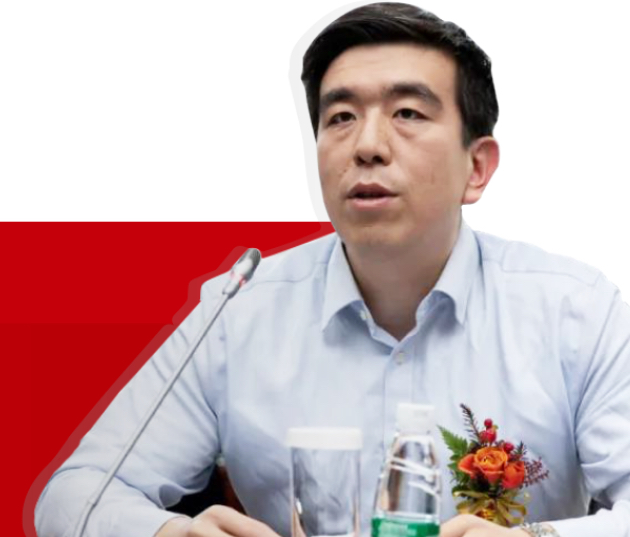Mindray and Tencent AI Lab signed a framework agreement on AI collaboration with the aim of jointly developing AI-assisted products for blood cell analysis and exploring the integration and application of AI technologies in in-vitro diagnostics.
Together with Baidu and Alibaba, Tencent is among the three Chinese tech giants and the company behind Wechat. In 2016, Tencent opened an AI lab in Shenzhen with its research focus on machine learning, speech recognition, natural language processing and computer vision. Its AI team is composed of 50 research scientists and more than 200 engineers in China and the United States.
Those present at the signing ceremony included Huawen Yan, General Manager of Mindray IVD Business Unit, Zhaoyang Li, General Manager of Mindray Technology Institute, Wei Yang, General Manager of Tencent AI Lab, Dr. Tianyi Qian, General Manager of Tencent Miying, Xiao Han, Head of Pathology and Treatment at Tencent AI Medical Center, and Yong Chen, Director of Medical Cooperation at Tencent AI Lab.
At the meeting, the management of both companies gave speeches about the collaboration.
Addressing the challenge of insufficient microscopy experts
In the complete blood count (CBC) test, or the blood routine, the automated hematology analyzer mainly provides counting and classification results, indicating changes in the number of peripheral blood cells, while morphology tests mainly indicate changes in the quality of blood cells. For diagnostic purposes, qualitative changes are often more important than quantitative changes. The former provides guidance for the diagnosis, classification, and staging of hematopoietic and lymphoid tissue tumors, anemia, infectious diseases, hemorrhagic diseases, and other relevant diseases. It also serves as a direct and objective diagnostic basis for monitoring curative effects and the prognosis.
In 2018, it is estimated there were a total of 437,000 new cases of and 309 thousand cancer deaths from leukemia worldwide [1]. Leukemia is the most common cancer in children and teens, marked by high malignancy and rapid exacerbation. Timely detection and proper treatment can effectively control or cure approximately more than 50% of childhood leukemia, with patients going on to survive for decades.
As CBC is the first screening test for patients, it is crucial to ensure early detection and assist clinical diagnosis with morphology tests, especially for leukemia. It is understood that in blood cell analysis the qualitative changes provided by morphology tests are clinically incredibly valuable for the detection of blood disorders, especially malignant ones such as leukemia.
However, the fact is that there is a shortage of morphology practitioners globally. That's why many companies across the world have launched a variety of automated morphology analyzers. However, all such devices struggle with precision, and thus require human judgement. This means they fail to tackle the clinical pain points.
AI for intelligent clinical solutions
Mindray’s partnership with Tencent AI Lab will combine Tencent's cutting-edge machine learning and computer vision algorithms, access to top-notch scientists, and comprehensive cloud solutions, with Mindray’s strength in slide processing, imaging systems, integrated design, access to clinical experts, and massive data to develop blood cell morphology analyzers with world-leading cell recognition capability. In addition, the companies will explore how AI technologies can support other aspects of the devices to improve their reliability or ease of use.
The two teams hope, through their joint efforts, to make blood cell morphology analysis devices and systems with world-leading imaging and cell recognition capabilities extensively available to medical facilities at all levels across China. They hope that this will ease the workload of microscopists, improve the quality of blood cell analysis reports, and minimize the false negative rate of leukemia test results.
In the future, Mindray and Tencent AI Lab will jointly explore the integration and application of AI technologies in other IVD segments in addition to morphology analysis, such as urinalysis, smart laboratory, and IVD big data to provide better medical devices and services and contribute to healthcare development at a global scale. The two companies strive to serve the public with technology, promote the accessibility of high-end technology, and bring quality healthcare to more people.
Reference:
[1] Bray F, Ferlay J, Soerjomataram I, Siegel RL, Torre LA, Jemal A. Global cancer statistics 2018: gLOBOCAN estimates of incidence and mortality worldwide for 36 cancers in 185 countries. CA J Clin. 2018;68(6):394–424.




